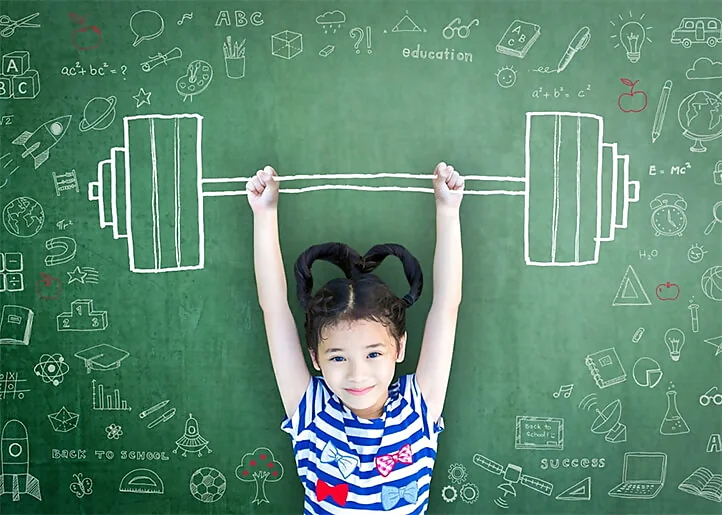Self-esteem is a fundamental concept in psychology that plays a key role in shaping personality and its interaction with the social environment. By determining an individual’s level of satisfaction with their own “self,” self-esteem influences many aspects of life, from personal growth to professional activities. However, not all types of self-esteem are the same, nor do they remain constant throughout a person’s life.
In this article, we will focus on various types of self-esteem, their theoretical foundations, diagnostic methods, and their impact on everyday life. We will explore different approaches to defining and measuring self-esteem, from classic theories proposed by renowned psychologists to modern techniques used in psychological practice and research.
The relevance of this topic is evident, as modern society demands a high level of individuality, adaptation, and self-presentation from each of us. Understanding how people evaluate themselves provides a key to solving many social and personal problems, from leadership and success to mental health and well-being.

Theoretical Foundations of Self-Esteem
Self-esteem is one of the most dynamic psychological constructs, which conditions an individual’s ability to adapt to changes in the social environment and influences personal growth. This internal process of self-evaluation includes self-awareness and self-acceptance and is a key element in forming self-identity. How people perceive themselves, evaluate their actions and achievements, affects their behavior and emotional well-being.
The interaction between self-esteem and behavior is the subject of numerous studies in psychology. Self-esteem not only reflects but also influences individual aspirations and achievements, becoming a determining factor in decision-making and goal setting. Of particular interest is how types of self-esteem contribute to or hinder personal development and what strategies can be developed to maintain a positive self-image.
The formation of self-esteem is a lifelong process that unfolds from early childhood to adulthood, becoming more complex with the involvement of new social roles and life experiences. It integrates individual experiences, social expectations, and cultural norms into a coherent structure that allows a person not only to interpret their life but also to motivate themselves to reach new heights. Thus, self-esteem becomes a fundamental element of personal and social dynamics.
Functions of Self-Esteem
- Regulatory function. Self-esteem acts as an internal regulator, motivating behavior and guiding individual decisions. It can serve as a source of motivation to achieve goals and improve one’s behavior when a person feels they do not meet their own standards.
- Protective function. High self-esteem can protect an individual from the negative influence of external criticism and failures, stabilizing their emotional state.
- Identity function. Self-esteem helps an individual define their place in society and forms part of their self-identity. It influences how a person positions themselves in social groups and society as a whole.
- Affective function. Self-esteem affects emotional well-being. A positive self-perception contributes to increased life satisfaction and optimism.
- Social adaptation function. Self-esteem helps an individual adapt to the social environment, allowing them to respond adequately to social signals and establish effective interpersonal relationships.
- Cognitive function. Through self-esteem, people interpret personal experiences, make decisions, and form life beliefs. It serves as a filter for processing information about oneself and the surrounding world.
- Self-protection function. Low self-esteem activates self-protection mechanisms aimed at avoiding situations that may lead to psychological trauma or stress.
- Self-realization function. Self-esteem is important in the process of self-realization, prompting an individual to develop their abilities and realize their potential in various areas of life.
A Historical Overview of Self-Esteem Theories
A historical overview of self-esteem theories is an analysis of the views of various psychologists and philosophers who have made significant contributions to understanding this concept over the past centuries. Below are some key moments in the history of self-esteem theory development:
- Philosophical approach (Antiquity and Middle Ages). Ancient philosophers such as Socrates, Plato, and Aristotle pondered the nature of self-consciousness and self-knowledge. While they did not use the modern term self-esteem, their ideas can be considered a foundation for understanding internal self-evaluative dynamics.
- Psychoanalytic theory (late 19th – early 20th century). Sigmund Freud and his successors, such as Alfred Adler, developed ideas of self-esteem as part of internal psychological struggles, including the inferiority complex in Adler’s case.
- Humanistic psychology (mid-20th century). Abraham Maslow and Carl Rogers presented important ideas on self-esteem in the context of self-actualization and self-acceptance. They emphasized the importance of positive self-esteem in achieving personal potential.
- Cognitive revolution (1950s-1970s). Psychologists like Aaron Beck and Albert Bandura noted the role of cognitive processes in the formation of self-esteem. Bandura, in particular, developed social learning theory, where self-esteem plays a key role in self-efficacy.
- Sociometric and behavioral approaches (20th century). Research in social psychology and behavioral therapy expanded the understanding of how social interaction and learning influence self-esteem.
- Self-determination theory (1980s). Edward Deci and Richard Ryan developed a theory emphasizing self-determination through autonomy, competence, and relatedness, which influences self-esteem.
- Modern research (21st century). The latest theoretical models and empirical studies continue to expand and refine our understanding of self-esteem, including the influence of social media, cultural norms, and globalization.
The Structure of Self-Esteem and Its Components
The structure of self-esteem is multifaceted and includes several components that together form an individual’s holistic self-concept. A detailed analysis of the structure of self-esteem may include the following aspects:
- General self-esteem. This is the fundamental, overarching self-assessment of a person. It includes a generalized perception of one’s worth and competence.
- Specific self-esteem. This refers to the evaluation of oneself in specific life areas, such as academic success, professional achievements, social skills, physical appearance, etc.
- Self-efficacy reflects an individual’s belief in their ability to achieve desired outcomes in specific situations or tasks.
- Self-acceptance involves accepting oneself with all strengths and weaknesses, successes and failures.
- Self-respect is the evaluation of oneself as a person deserving of respect and dignified treatment by others.
- Self-idealization. Relates to the notions of an ideal “self” that the individual strives to meet.
- Self-criticism. The tendency for self-analysis and criticism of one’s mistakes and shortcomings.
- Self-confidence. The feeling of personal strength, resilience, and confidence in oneself during social interactions.
- Social self-esteem. Reflects an awareness and evaluation of how the individual is perceived by others.
These components interact with each other, forming a dynamic system that reflects both the individual’s internal perception and their interaction with the social environment. Exploring these aspects helps to understand how self-esteem is formed, how it may change over a lifetime, and what impact it has on behavior and mental well-being.

Types of Self-Esteem
Self-esteem is a complex and multifaceted phenomenon that manifests in various aspects of personality. It represents a system where each type of self-esteem plays a specific role in a person’s psychological health and behavior. Identifying and distinguishing the specific types of self-esteem allows for a deeper understanding of how individuals evaluate themselves in social, professional, and personal contexts, as well as how they perceive their achievements and shortcomings.
Conceptually, types of self-esteem can be categorized based on different criteria: stability over time, content orientation, adherence to social norms, or personal goals. This categorization helps psychologists and researchers better classify and analyze individual behavior and develop methods for correcting and maintaining healthy self-esteem.
Understanding the diversity of self-esteem types is important not only for specialists but also for individuals, as recognizing one’s position within this spectrum aids in achieving personal harmony. The journey toward self-improvement and self-acceptance begins with identifying these types of self-esteem, which are key components of a successful life.
Low Self-Esteem: Characteristics and Consequences
Low self-esteem refers to a state where an individual underestimates their abilities, achievements, and overall worth. This can have far-reaching consequences for mental and emotional well-being, as well as social behavior.
People with low self-esteem are often prone to self-criticism and doubt. They may feel that they fall short of others’ expectations or their own standards. This type of self-esteem is typically associated with pessimistic beliefs about oneself and life, manifesting in feelings of helplessness or low motivation to achieve goals.
Causes of Low Self-Esteem
Low self-esteem can result from various factors, such as negative childhood experiences, underestimation by parents or peers, constant criticism or neglect, and being raised in an environment of high demands without support. Chronic stress or traumatic events can also contribute to its development.
Consequences of Low Self-Esteem
Low self-esteem often leads to social avoidance, as individuals may fear being negatively judged by others. This can limit their social activity and personal growth. In the long term, low self-esteem can contribute to the development of depression, anxiety disorders or hinder the formation of stable and healthy relationships.
People with low self-esteem also struggle with decision-making, as they do not trust their own judgment or feel less competent. They may shy away from new opportunities or avoid taking responsibility for their lives due to fear of failure.
To overcome low self-esteem, psychotherapeutic methods such as cognitive-behavioral therapy (CBT) are often used, helping individuals identify and change negative thinking patterns that support low self-esteem. Regular mindfulness practice and the development of self-compassion skills are also useful for improving self-esteem.
Adequate Self-Esteem: Concept and Importance
Adequate self-esteem plays a key role in a person’s mental health and emotional well-being. This concept refers to an individual’s ability to realistically, or objectively, assess their abilities, achievements, inner qualities, and place in society. People with adequate self-esteem can take pride in their successes and accept criticism without taking offense.
Adequate self-esteem involves a balance between self-respect and self-criticism. A person with adequate self-esteem is honest with themselves, recognizes their mistakes and shortcomings, while also acknowledging their strengths and achievements. They are capable of constructive self-improvement without going to extremes.
Importance of Adequate Self-Esteem
Healthy self-esteem forms the foundation for mental well-being and serves as a resource for overcoming life challenges. It promotes resilience, helps establish and achieve goals, and leads to the development of positive interpersonal relationships. Moreover, adequate self-esteem enables individuals to take risks and try new things, which is important for personal growth.
People with adequate self-esteem typically have a healthy level of self-sufficiency and self-confidence, allowing them to be effective in social interactions. They are less prone to social anxiety and dependence on others’ opinions, which in turn fosters greater autonomy and independence.
Developing Adequate Self-Esteem
Adequate self-esteem is shaped by personal experiences, interactions with others, upbringing, and education. It is a lifelong process that can be adjusted through self-reflection, positive interpersonal connections, and professional psychological support.
Inflated Self-Esteem: Features and Potential Risks
Inflated self-esteem is characterized by an overestimation of one’s abilities, achievements, and self-importance. People with inflated self-esteem often ignore their shortcomings and mistakes, may be excessively confident in their infallibility, and often expect special treatment from others. This behavior can lead to conflicts in interpersonal relationships and in professional settings.
One of the key features of inflated self-esteem is the tendency to focus excessively on oneself and one’s accomplishments. Individuals with inflated self-esteem often believe they deserve more than others and display disregard and a lack of empathy. They may fail to recognize or acknowledge their flaws, leading to poor decisions or rash actions.
Potential Risks of Inflated Self-Esteem
Inflated self-esteem can lead to several negative consequences, including:
- Conflicts with others: Disregard for others and inability to acknowledge mistakes can create tension in relationships.
- Difficulty in decision-making: Excessive confidence in one’s correctness can hinder objective assessment of situations and the selection of optimal solutions.
- Inability to learn from mistakes: Ignoring shortcomings can impede personal growth and development.
- Loss of realistic self-esteem: Long-term overestimation of one’s abilities often detaches individuals from reality, making them vulnerable to criticism and rejection.
Impact of Inflated Self-Esteem on Life Domains
In the long term, inflated self-esteem can negatively affect one’s career and personal relationships. In professional contexts, such individuals may encounter rejections and failures due to unrealistic expectations and a lack of critical self-analysis. In interpersonal relationships, the inability to compromise and maintain healthy communication leads to distancing from friends and loved ones.
Ways to Correct Inflated Self-Esteem
Correcting inflated self-esteem may require working with a psychologist or psychotherapist who can help individuals understand and accept their weaknesses, become more open, and improve social interaction skills. It is also important to learn how to objectively analyze one’s behavior and its consequences to avoid future mistakes that lead to overestimating one’s significance.
Defense Mechanisms in Self-Esteem
Defense mechanisms in psychology are defined as processes that protect a person’s psyche from painful emotions and thoughts. In the context of self-esteem, these mechanisms may manifest in various forms, allowing individuals to protect their “self” from acknowledging their own shortcomings, failures, or unacceptable impulses. Here are some key defense mechanisms related to self-esteem:
- Denial: The individual refuses to acknowledge the reality of painful experiences or personal shortcomings, rejecting the existence of a problem.
- Rationalization: They explain their behavior or failures with logical arguments, often avoiding the real reasons.
- Projection: The individual attributes their own undesirable thoughts, feelings, or motives to others, without realizing that they actually belong to them.
- Regression: Under stress, the individual may revert to previously experienced forms of behavior typical of a younger age.
- Sublimation: Considered a healthy mechanism, where a person channels unacceptable impulses into socially valuable and productive activities.
- Repression: Removing unpleasant thoughts, feelings, and desires from consciousness.
- Identification: Subconscious incorporation of another person’s or group’s traits into one’s own personality.
- Intellectualization: Focusing on intellectual analysis instead of accepting emotional experiences.
- Compensation: Attempting to offset one’s weaknesses or shortcomings by developing other qualities or achievements.
In the context of self-esteem, defense mechanisms allow individuals to maintain an image that meets their ideal, often through denial or rationalization of negative aspects of their personality or behavior. Although defense mechanisms can temporarily protect against psychological discomfort, they hinder personal growth and real self-awareness.

Research Methods of Self-Esteem
Self-esteem is a key element of personality psychology and plays a crucial role in many aspects of a person’s life. Due to its complexity and variability, accurately researching self-esteem requires well-designed and reliable methodologies. These methods are developed to assess both the quantitative and qualitative aspects of a person’s self-perception, their well-being, and self-definition in different contexts.
In recent decades, psychologists have developed a variety of tools to measure self-esteem, each revealing specific facets of this multifaceted construct. From self-assessment questionnaires to projective tests and behavioral observations, these methodologies are designed to explore the deep and surface levels of human feelings, assess their stability and flexibility, and identify potential imbalances and anomalies.
The use of these tools requires not only professional knowledge but also an understanding of a person’s life experience, cultural, and social dimensions. Only by considering all these factors is it possible to obtain objective data that will serve as a reliable basis for further analysis of self-esteem and the development of strategies for its correction or support.
Classical Methods of Self-Esteem Research
Classical methods of self-esteem research include a set of standard tools that allow scientists and psychologists to analyze and evaluate a person’s level of self-esteem. These typically include various questionnaires and tests developed based on theoretical research and practical experience.
- Rosenberg Self-Esteem Scale – One of the most well-known and widely used methods for measuring global self-esteem. This questionnaire contains 10 questions that assess an individual’s overall attitude towards themselves.
- Coopersmith Self-Esteem Inventory – Another classical method that focuses on self-esteem in the context of self-respect and self-confidence. It includes both a general form and brief versions for children and adolescents.
- Harrington’s Self-Esteem Scale – This tool measures self-esteem by examining various aspects of self-respect, including social adaptation and emotional balance.
- Mirrored Self-Esteem Method – A technique based on indirect evaluation, where participants are asked to assess themselves through the perception of others.
- Five-Factor Self-Esteem Questionnaire – This method evaluates self-esteem through the lens of five major personality factors, such as openness to experience, conscientiousness, extraversion, agreeableness, and neuroticism.
These classical methods play a key role in researching self-esteem and its impact on a person’s psychological well-being. They have become the foundation for many modern studies and developments in psychometrics and clinical practice.
Modern Techniques for Self-Esteem Assessment
Modern techniques for self-esteem assessment involve more innovative and complex approaches. Here are a few examples:
- Implicit Association Tests (IAT). These tests measure unconscious associations a person has about themselves. They help to reveal implicit self-esteem, which can differ significantly from consciously expressed self-esteem.
- Attribution of Success and Failure Assessment. Researchers analyze how individuals attribute success or failure to understand their inner self-esteem.
- Sociometry and Partnership Assessment. These methods include evaluating self-esteem through interactions with others and perceiving oneself in a social context.
- Electronic Self-Esteem Diaries. The use of mobile applications and other digital tools for real-time data collection on self-esteem.
- Biological and Neuroimaging Methods. Measurement of physiological responses and brain activity related to self-esteem, such as using functional magnetic resonance imaging (fMRI).
- Self-Monitoring and Self-Reporting Techniques. Processes of self-monitoring and reflection, allowing individuals to analyze their behavior and internal states.
- Computerized Adaptive Testing. Using algorithms that adapt questions based on a participant’s responses, providing a more accurate and individualized assessment of self-esteem.
- Self-Visualization Techniques. Applying virtual reality or other visual methods to explore how people see themselves in various imaginary scenarios.
- Using Social Networks to Analyze Self-Esteem. Analyzing online behavior, posts, and interactions on social media can provide insights into a person’s self-esteem.
- Gamified Assessment Tools. Integrating game elements into the assessment process to create a more engaging and less stressful experience of self-esteem evaluation.
These modern approaches expand the capabilities of traditional methods, allowing a deeper exploration of various aspects of self-esteem and understanding its impact on a person’s behavior, emotional state, and social interactions.
Projective Methods for Diagnosing Self-Esteem
Projective methods for diagnosing self-esteem are based on the idea that people project their hidden emotions, desires, fears, and conflicts onto ambiguous or unstructured stimuli. This type of diagnosis allows for the exploration of unconscious aspects of personality that can affect self-esteem. Here are a few examples of commonly used projective methods:
- Rorschach Test. Participants are shown cards with symmetrical inkblots. They must describe what they see in each of them. The answers can reveal both conscious and unconscious thoughts about themselves.
- Thematic Apperception Test (TAT). Participants look at ambiguous images of people in different situations and create stories about them. These stories may reflect the participant’s own fears, hopes, and attitudes, including self-esteem.
- Sensorimotor Integration Test (SMIT). This less-known projective method involves interpreting responses based on sensorimotor tasks. It helps to determine how physical self-perception influences internal self-esteem.
- Tree Drawing Method (TDM). Participants are asked to draw a tree, which can reflect their self-esteem through symbolic representation of strength, growth, and stability.
- Incomplete Sentences Test. This test involves participants completing unfinished sentences, which can reveal hidden emotional states and self-perception.
- Color Choice Method. Participants are asked to choose colors that attract or repel them, which can be interpreted as a reflection of their emotional state and well-being.
- Draw-a-Person Test. In this test, participants are asked to draw a person, and details of the drawing can indicate self-acceptance and self-esteem.
Such methods provide psychologists with deep insights into the unconscious processes that affect a person’s self-esteem, but their interpretation requires detailed expertise and experience.
Cross-Cultural Aspects of Self-Esteem Assessment
Cross-cultural aspects of self-esteem assessment are crucial, as self-esteem does not exist in a vacuum. It is shaped by cultural norms, values, and societal expectations, which differ from country to country. When assessing self-esteem in different cultures, professionals need to take the following aspects into account:
- Cultural Specificity of Self-Expression and Evaluation. In some cultures, such as East Asian cultures, modesty and group harmony are valued more than individualism, which may lead to lower levels of self-esteem expression compared to Western cultures, where high self-esteem is considered a positive trait.
- Sociocultural Influence on Self-Esteem. For instance, standards of beauty, success, or achievement may differ significantly among different peoples, which in turn affects the self-esteem of individuals within that culture.
- Language and Conceptual Barriers. Direct translation of assessment tools without considering language nuances and cultural concepts may lead to incorrect interpretations of results.
- Ethnic Identity and Multiculturalism. People who identify with two or more cultures may show different levels of self-esteem depending on the context.
- Cultural Sensitivity of Tests. Diagnostic tools developed for one culture may be ineffective or even misleading in another cultural setting.
- Normative Data. To accurately interpret results, it is important to use normative data that reflect the ethnic, cultural, and socioeconomic diversity of the population.
- Approach to Self-Development and Self-Improvement. In cultures emphasizing personal growth, self-esteem may be closely tied to self-improvement and personal progress.
Assessing self-esteem in a cross-cultural context requires not only knowledge and understanding of these differences but also the use of tools adapted or developed with cultural specificity in mind.

Diagnostics of Self-Esteem Types
Diagnostics of self-esteem types is a complex process that requires a thorough understanding of the psychological mechanisms forming a person’s self-perception and self-awareness. Due to its multifaceted nature and depth, it plays an important role in psychological assessment and psychotherapy, opening the door to understanding a person’s inner world.
The goal of self-esteem diagnostics is not just to determine the level of self-esteem but also to identify its structural components, dynamics, and interactions with other aspects of personality. This helps to pinpoint potential imbalances and areas that may require further development or correction.
Various methods and tools are used in the process of diagnostics, ranging from standard questionnaires to complex projective tests that help to assess self-esteem through the lens of social interactions, personal beliefs, and emotional reactions.
The final stage involves interpreting the results, which requires not only professional knowledge but also a deep understanding of each individual’s unique characteristics. Thus, self-esteem diagnostics becomes an art, where every result reflects a unique psychological portrait.
Diagnostics and Correction of Low Self-Esteem
The diagnosis of low self-esteem is a key step in its correction and in improving an individual’s quality of life. Low self-esteem may not be merely a temporary state or insecurity, but a deeply ingrained belief that affects all aspects of a person’s life. It is associated with psychological challenges such as depression, anxiety, and a range of social problems.
In diagnosing low self-esteem, psychologists use various tools to assess levels of self-respect and self-perception. These tools include questionnaires, self-esteem scales, projective tests, and interviews. These methods not only identify the issue but also help understand its roots and the factors that sustain it.
The correction of low self-esteem is a process that may include psychotherapy, counseling, social skills training, and other forms of psychological support. The goal of correction is to help the individual develop a positive self-perception, build self-respect, and learn to critically evaluate and support their own worth.
Specialists emphasize the importance of an integrated approach to correcting low self-esteem, which includes working on both cognitive and emotional aspects of personality. Engaging close people, working on setting boundaries, and developing adequate self-esteem can have a long-term positive impact on anyone’s life.
Assessment of Self-Esteem Adequacy
Assessing the adequacy of self-esteem is an important component of psychological analysis and the diagnosis of personal development. Adequate self-esteem is characterized by a realistic perception of one’s strengths and weaknesses, capabilities, and limitations. This balance of self-esteem plays a key role in emotional stability, achievement motivation, and overall psychological well-being.
To assess the adequacy of self-esteem, specialists employ various psychometric tools. These tools help to evaluate how objectively an individual assesses their own successes and failures, as well as their ability to be self-critical without slipping into extremes of self-criticism or self-aggrandizement.
When determining the level of self-esteem adequacy, it is also important to consider socio-cultural factors that influence the formation of a person’s self-awareness. Different cultural contexts may have their own norms and expectations regarding how people should perceive themselves and their accomplishments.
Self-esteem adequacy can be corrected through counseling support, therapeutic interventions, affirmations, and the development of emotional intelligence. Psychologists and counselors work to help people build a more harmonious and productive relationship with themselves, which positively affects their interpersonal relationships and overall well-being.
Identification and Correction of Overestimated Self-Esteem
The identification and correction of overestimated self-esteem are important components of psychotherapeutic work, as excessively high self-esteem can lead to conflicts, misunderstandings in social relationships, and even personal crises. Overestimated self-esteem is often characterized by an unrealistic positive perception of one’s abilities, achievements, and role in social relationships, which may be a defense mechanism hiding low self-esteem or inner fears.
To identify overestimated self-esteem, special diagnostic techniques are used, which may include self-assessment surveys as well as more complex procedures that require observing the individual’s behavior in social interactions. It is important not only to record the overvaluation of self but also to understand its underlying causes and functions.
The correction of overestimated self-esteem is usually carried out through a comprehensive approach that may include cognitive-behavioral therapy, social skills training, learning self-reflection techniques, and working through internal conflicts. The goal of such work is to help the client develop a more realistic self-perception, increase empathy toward others, and form stable and healthy interpersonal relationships.
Using Self-Esteem Types to Predict Behavior
Self-esteem can be a powerful tool for predicting behavior, as it influences how a person perceives themselves in social contexts, their motivation, and their expectations from life situations. Personal assessments of one’s abilities and values affect decision-making and future outcomes.
- Impact on Motivation. Individuals with high self-esteem are usually more motivated to achieve high results and view challenges as opportunities for growth. They are more likely to engage in risky behavior to achieve ambitious goals.
- Social Interactions. People with adequate self-esteem typically have healthier interpersonal relationships as they can realistically assess and acknowledge both their strengths and weaknesses.
- Behavioral Consistency. Low self-esteem can lead to avoiding social situations or fostering dependent behaviors, while overestimated self-esteem can result in aggressive or reckless actions.
- Professional Growth. Self-esteem influences a person’s career aspirations and work dedication. Individuals with high self-esteem often strive for leadership positions and have a higher level of professional success.
- Personal Development. Self-esteem plays a key role in personal growth. People with adequate self-esteem are more inclined to self-analysis and self-improvement, while those with low self-esteem may avoid self-reflection and change.
- Emotional Well-Being. High or adequate self-esteem is an essential component of emotional well-being. People with a positive self-perception usually experience less stress and anxiety.
Thus, various types of self-esteem are indicators of many aspects of behavior and can serve as reliable predictive tools for psychologists, counselors, teachers, and managers. By understanding how self-esteem influences a person’s actions and choices, it is possible to work more effectively on correcting and developing personal potentials.

Techniques for Self-Esteem Correction in Counseling Psychology
Self-esteem correction techniques are an important part of counseling psychology. They help clients strengthen their self-perception, increase self-respect, and improve their quality of life. Here are a number of techniques often used by psychologists:
- Positive self-expression. Clients are encouraged to record daily positive moments of their behavior, successes, and positive qualities.
- Cognitive-behavioral therapy techniques include identifying and challenging negative thoughts about oneself, as well as changing behavioral patterns that support low self-esteem.
- Mindfulness and awareness. The ability to be present in the moment and observe one’s thoughts and feelings without judgment helps reduce self-criticism.
- Assertiveness training. Understanding how to express one’s needs and set boundaries without aggression or passivity enhances self-respect.
- Role-playing allows clients to practice new behavioral strategies in a safe environment.
- Learning social interaction skills helps boost confidence in social situations.
- Bibliotherapy. Using books and literature to support and inspire clients.
- Applying metaphors and analogies to create a new vision of oneself and one’s capabilities.
- Engaging in favorite activities helps improve mood and increase the sense of accomplishment.
- Relaxation techniques and stress management. Teaching stress management methods helps clients better cope with their emotions.
- Creating a personal growth plan involves setting goals, identifying steps to achieve them, and recognizing one’s efforts and successes.
Counseling psychologists choose self-esteem correction techniques depending on the client’s individual needs, goals, and the specifics of the problem they are addressing.
Developing Adequate Self-Esteem Through Group Training
Developing adequate self-esteem through group training is an effective strategy for increasing self-respect and self-confidence. This approach involves interacting with others who have similar challenges or goals, creating an environment of support and understanding. Here are some key aspects of group training aimed at developing adequate self-esteem:
- Creating positive group dynamics. The trainer uses various exercises to promote positive interactions among participants, fostering mutual support and understanding.
- Open communication. Group sessions encourage participants to share their experiences and feelings, which enhances their understanding of their self-esteem and the factors influencing it.
- Role-playing and self-presentation exercises. Such activities allow participants to experiment with new ways of self-expression and receive feedback in a safe environment.
- Learning social interaction skills. Group training often includes practicing assertiveness, listening, and communication, which improves interpersonal relationships and positively impacts self-esteem.
- Setting and achieving goals. Participants learn to set realistic goals and work toward achieving them in a group context, which strengthens their belief in their abilities.
- Feedback and positive reinforcement. The trainer and other group members provide constructive feedback, which helps each participant improve their self-perception.
- Discussing successes and failures. Participants learn to analyze and discuss their achievements and failures, viewing setbacks as opportunities for learning and growth.
- Increasing self-awareness. During training, people learn more about themselves, their values, beliefs, and motivation, which is critical for developing healthy self-esteem.
- Self-help and self-regulation strategies. Mastering self-control and self-encouragement techniques allows participants to effectively manage stress and emotional states.
- Promoting self-acceptance. Group training encourages the development of a more positive attitude towards oneself, which is key to adequate self-esteem.
Self-Esteem in School and Family Psychological Practice
Self-esteem plays a critical role in the development and well-being of children and adolescents, especially in school and family psychological practice. It can affect academic performance, interpersonal relationships, and a child’s ability to adapt to new situations. Here are some key aspects that can be included in the practice of supporting and developing self-esteem in these contexts:
- Family support. The family has a huge impact on the formation of self-esteem. Psychologists can work with parents, teaching them strategies for positive reinforcement and providing constructive feedback that supports the development of healthy self-esteem in the child.
- School integration. School is where children first face challenges to their self-esteem, especially due to social interaction and academic assessment. Working with teachers and school psychologists helps create a supportive learning environment.
- Recognition of individuality. It is important to recognize the unique talents and abilities of children, giving them opportunities to express and develop their interests and skills.
- Building resilience. Teaching children and adolescents to be resilient in the face of challenges and failures is key to maintaining their self-esteem. Developing coping skills and the ability to handle mistakes fosters children’s growth.
- Social skills. Developing social skills such as communication, cooperation, and conflict management helps children increase self-respect and better integrate into social groups.
- Emotional support. Understanding and supporting the emotional world of a child is important for developing a positive self-awareness and self-esteem.
- Supporting academic achievement. Assisting with educational challenges and supporting academic achievements strengthens intrinsic motivation and confidence in one’s abilities.
- Early intervention programs. Identifying self-esteem issues early prevents many problems that may arise during adolescence.
- Counseling and therapy. Individual and group therapy sessions help children understand their emotions and behavior, positively influencing their self-esteem.
- Educational seminars and training. Holding seminars for parents and educators on self-esteem development and its impact on children’s behavior improves the overall understanding and approach to this topic.
Interaction between school and family factors is very important for forming a healthy level of self-esteem in young people—this is the foundation for their successful social and emotional development.
Self-Esteem and Its Relationship with Career Counseling
Self-esteem is an important element in career development and counseling, as it significantly influences professional choices, ambitions, performance, and overall career satisfaction. Quality self-esteem contributes to confidence in one’s abilities, the capacity to set and achieve goals, and effectively handle work challenges.
Here are some key aspects of the relationship between self-esteem and career counseling:
- Defining career goals. High self-esteem helps individuals clearly define their professional goals and aspirations, while low self-esteem can limit the ability to dream and plan for the future.
- Decision-making process. People with adequate self-esteem are usually more decisive and confident in making professional decisions. They are less prone to hesitation and changing opinions under the influence of external factors.
- Self-presentation. Self-esteem directly impacts how a person presents themselves during interviews and in professional relationships. A high level of self-esteem usually correlates with better communication skills and the impression one leaves.
- Feedback and criticism. Self-esteem influences how people perceive and process feedback and criticism in the workplace. Those with healthy self-esteem take criticism constructively and use it for personal growth.
- Professional development. Self-esteem can either stimulate or hinder professional growth. People with adequate self-esteem are more likely to seek opportunities for learning and development, while low self-esteem leads to underestimating their potential for advancement.
Career counselors help develop healthy self-esteem in clients, which positively impacts their professional journey and overall life satisfaction. This may include various strategies such as skills development training, self-reflection techniques, career planning, and support in achieving professional goals.

Summary of Types of Self-Esteem and Conclusions
Self-esteem is the internal assessment of one’s qualities, abilities, and values. It plays a crucial role in shaping behavior, motivation, and social interaction. Different types of self-esteem can vary widely and have diverse impacts on personality and the way one interacts with the world.
- Low self-esteem is often associated with insecurity, social anxiety, and a tendency toward depressive states. People with low self-esteem may struggle to accept positive information about themselves and excessively focus on their flaws. This leads to a reduction in personal and professional potential.
- Adequate self-esteem is a balance between recognizing one’s achievements and maintaining moderate self-criticism. People with adequate self-esteem are usually realistic in their expectations and have a stable self-image. They can respond constructively to criticism and use it for personal development.
- Overestimated self-esteem can lead to arrogance, narcissism, and disregard for advice and feedback from others. While it can be helpful in protecting against negative emotions, overestimated self-esteem often hinders objective self-analysis and leads to problems in relationships.
Defense mechanisms in self-esteem work as a way to manage emotional discomfort arising from discrepancies between reality and one’s self-perception. They can be useful in the short term but lead to distorted self-perception and interaction with others in the long term.
In psychological practice, self-esteem is considered an important variable that can be corrected and developed through therapy, personal growth training, and educational programs. Understanding how different types of self-esteem are formed and how they affect individuals is key to providing effective help and support in various life domains.




